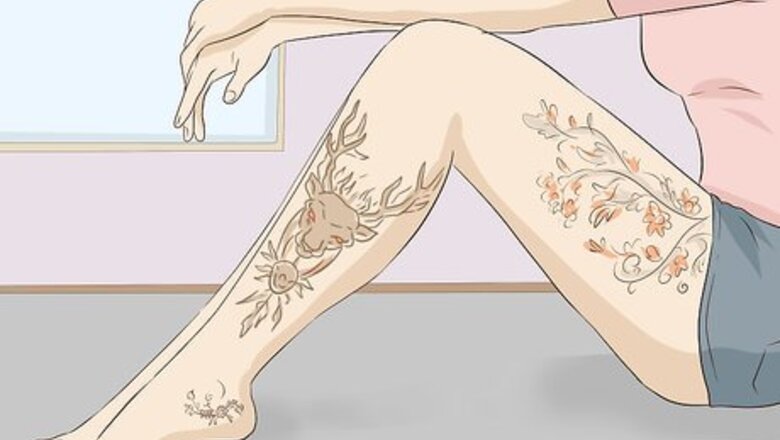
views
Using Aesthetics to Guide You
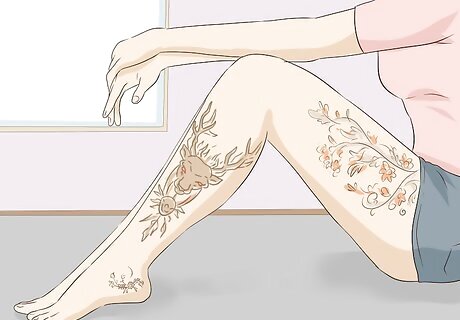
Break your body up into a series of canvasses to visualize your tattoo. Each canvas can be called a piece. These "canvasses" or pieces are broken up by your body's joints. For instance, the top of your thigh to your knee is one "canvas." Consider each of these canvasses in turn for placing your tattoo. For example, the top of your arm to your elbow is called a "half-sleeve," while your entire arm from the top to your wrist would be a "full-sleeve." If you were interested in a smaller arm piece that would be covered by a short-sleeved shirt, you could ask for a "quarter-sleeve," which ends mid-bicep. As another example, a back piece traditionally goes from the bottom of your neck to below your buttocks. Understanding where these pieces traditionally go will help you tell your tattoo artist exactly what you want. By visually breaking up your body into sections, you can figure out which designs work best in each place. You're looking for the best small and large areas on your body where tattoos can go.
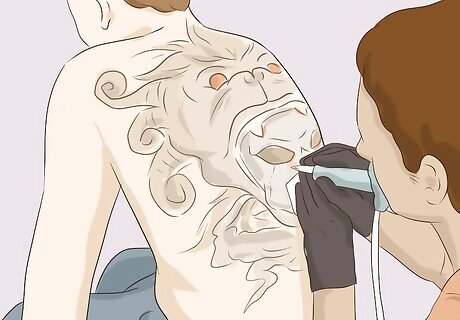
Place large, detailed pieces on large sections of your body. A very detailed design is nearly impossible to do in a small space. If you want a detailed design, you'll need to choose a larger area of your body to make the design work. For a large design, such as a portrait or a character, choose areas of skin that are easy for your artist to access without making you contort yourself, such as your back, thigh, or upper arms.
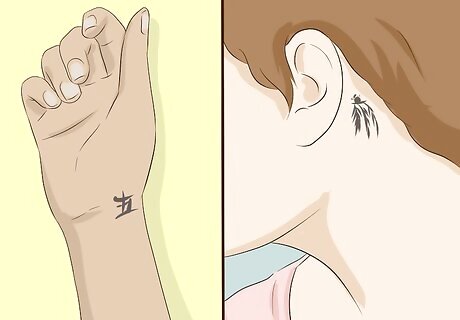
Put small designs on smaller parts of your body. For smaller designs, such as symbols, you can pick much smaller areas. You can put one on your inner wrist, for example, or on your hand. You may even prefer a more whimsical placement. Try behind the ear, around a finger, or behind the joint of your ankle. For an extra bit of whimsy, consider the forward helix (on your ear) or the inside of your lip!
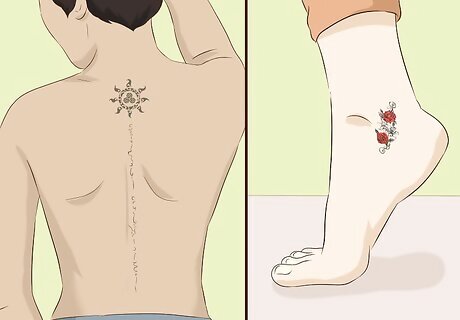
Choose a location based on your tattoo's shape. Look at the design of your tattoo. Is it long and thin? Is it round? Is it rectangular or oval? The shape is important, as different shapes will look best on different parts of your body. For instance, a long, thin tattoo might look good down your spine, along your forearm, or down your leg. They may also look great going down the sides of your back or stomach, but keep in mind that their shape can change as you gain weight or if you have a baby. You can wrap some designs around a limb, such as a tribal band or the string of rosary beads. Choose an area that will allow the artist to complete the design evenly, such as the upper forearm, the bicep, or just above the ankle.
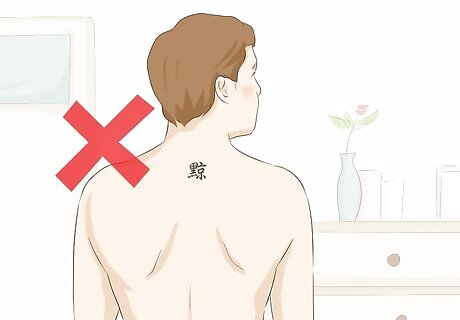
Avoid taking up a large space for a small tattoo. Many people regret taking up a large part of their tattoo-able space with a tiny tattoo in the middle. You may want to get more tattoos in that space later or a large tattoo that covers the whole thing. For instance, if you get a small symbol in the middle of your shoulder blade, you can't get a larger tattoo there later unless you incorporate that symbol into the design or cover it with an entirely new design.
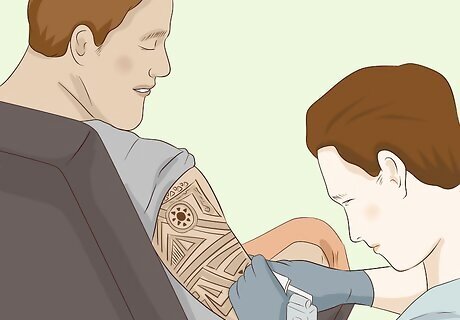
Pick a location that you will still like as you age. When looking to place your tattoo, think about what may happen to your body as it ages. Are you always going to like that tattoo in that particular place? It may be fine when you're in your 20s, but think about how you'll feel in your 40s, 50s, or 60s+. You may want to place your tattoo so it's not as susceptible to your body's aging process. For instance, you're less likely to gain weight on the backs of your shoulders than you are on your stomach. In fact, stretch marks from having children may obscure the tattoo completely. Therefore, your shoulder blade may be a better option. Similarly, you're not likely to gain much weight in your wrists or feet, so they may be a good option. Even though your feet may occasionally swell or can get bigger, tattoos usually maintain their shape.
Choosing a Practical Placement
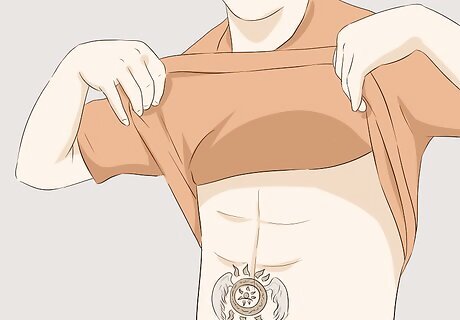
Get your tattoo on the front of your body if you want to be able to easily see it. Some people love being able to see their tattoo all the time, and some people don't. If you do, place it somewhere you can see it without a mirror, such as your belly, breasts, arms, or legs. If not, place it somewhere you can only see if you look in a mirror. For an in-between option, pick a place that you can see without a mirror but that can be covered with clothing.
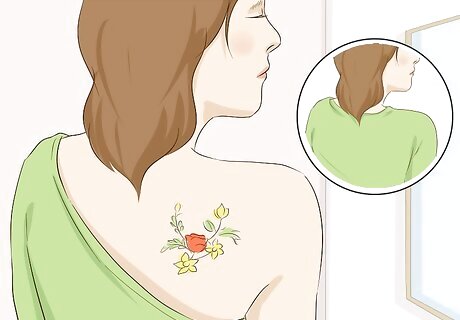
Try a spot that you can hide or reveal depending on your outfit. You may want to show off your tattoo and place it somewhere people can see it all the time. On the other hand, you may want the option to hide it at times by picking a different piece of clothing. If you want to be able to hide it, choose a place where you have that option. For instance, if you have a tattoo on the trapezius muscles between your neck and shoulders, you can cover it up with a collared shirt or choose a shirt with a low neckline to show it off. You may also be able to do this with tattoos on your thighs, upper arms, back, and your feet.
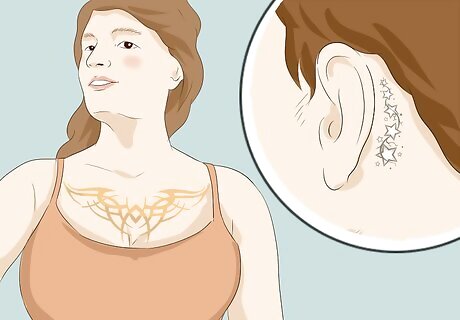
Try a "peekaboo" tattoo for a fun placement. These tattoos are placed in areas that are commonly not very visible to the casual observer, but may reveal themselves as you move, such as behind your ear, inside your lip, on the webs of your fingers, or on the inside of your upper arm. You can also try your upper chest, lower back, collarbone, or behind your ankle joint.
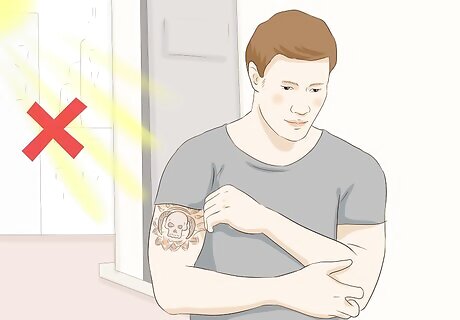
Hide delicate colorful tattoos from the sun. Tattoos will fade over time, and the sun speeds up the process. If you want a tattoo with a lot of color, then it's best to place it where it can be hidden by clothing. That way, the sun can't get to it as much, keeping it from fading as quickly. The sun also makes your skin age faster, which can decrease the beauty of your tattoo. Protect both your skin and your tattoo colors with a broad spectrum sunscreen.
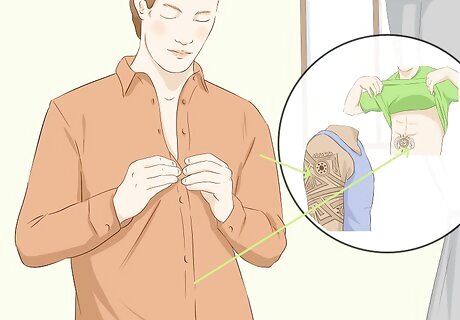
Place your tattoo in a discreet place if you need to hide it for a job. If you are worried about hiding your tattoo at your job or from certain people, then put it somewhere that's easily hidden. The torso area is a good option for a hidden tattoo, as you can easily cover up this area as needed. You could also try your upper thigh, shoulder blade, back, or side, as those areas are usually hidden by professional clothing.
Working within Your Pain Tolerance
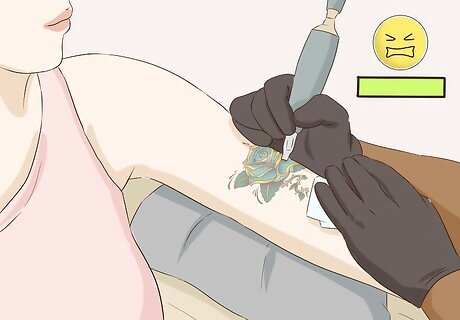
Aim for "meatier" areas like the thigh or biceps for the least pain. If it's your first tattoo, these 2 places may be a good choice. They tend to be less painful than other areas because of the muscle. The forearm or back of the shoulder is also a good choice. However, you may want to skip the inside of the upper arm if you have a low pain tolerance, as it has too many nerve endings to be very comfortable. EXPERT TIP Michelle Myles Michelle Myles Tattoo Artist Michelle Myles is the Co-owner of Daredevil Tattoo, a tattoo shop located based in New York City's Lower East Side. Michelle has more than 20 years of tattooing experience. She also operates the Daredevil Tattoo Museum, co-owner Brad Fink's personal collection of antique tattoo memorabilia that he has amassed over the last 27 years of tattooing. Michelle Myles Michelle Myles Tattoo Artist It's a good idea to focus on where you want the tattoo to go, rather than where it won't hurt as much. Get your tattoo where you really want it, and don't make the decision based on how much it hurts. It's really not going to make that much of a difference from once place to another, especially if it's a smaller tattoo. The pain will go away, but you're still going to be stuck with the placement.
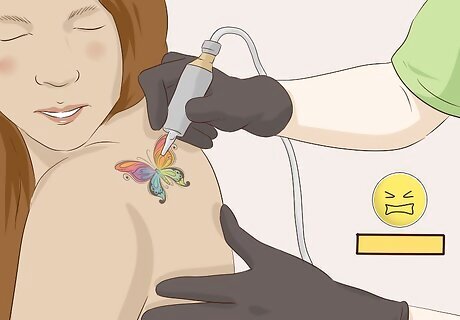
Consider the calves or shoulder for pain in the lower- to mid-range. These areas still provide quite a bit of muscle for the needles to hit. They have a bit more bone than the thighs or biceps, but they still have more cushion than other areas. The wrists also fall into this range, but they are slightly more painful.
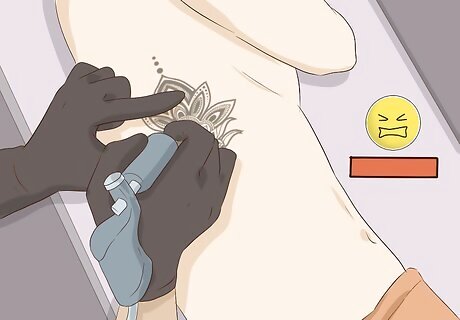
Avoid bony areas to decrease the pain. Bony areas, such as your feet, hands, ribs, knees, and elbows, are all going to be more painful. A tattoo is going to hurt, unfortunately, but if you get a tattoo in one of these areas, it's likely to hurt more. These areas hurt because you don't have as much flesh between the needle and the bone. However, you might prefer to start with these areas to set your pain tolerance at a high level.
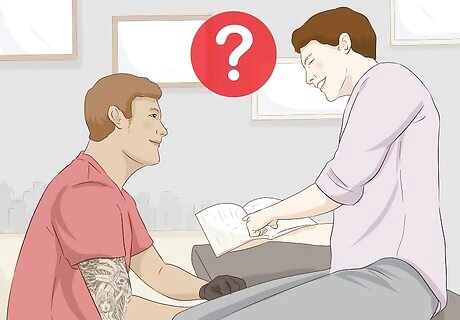
Talk to your tattoo artist about your pain tolerance. The tattoo artist is going to know which areas hurt the most. If you're especially sensitive to pain, ask the artist about good places for you to get a tattoo.


















Comments
0 comment